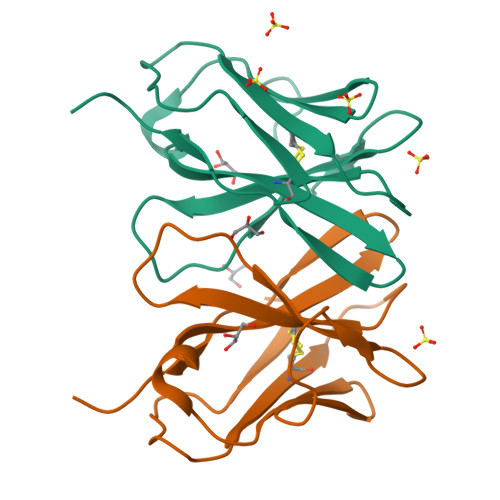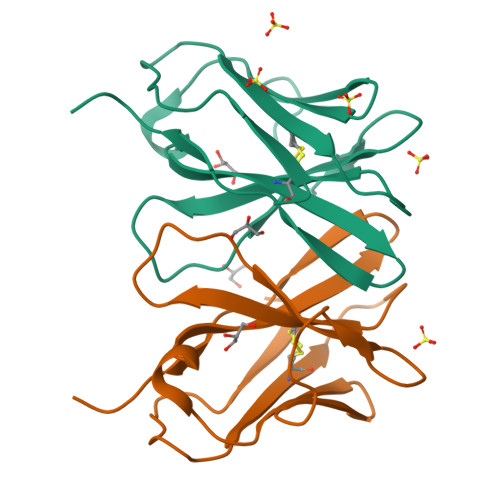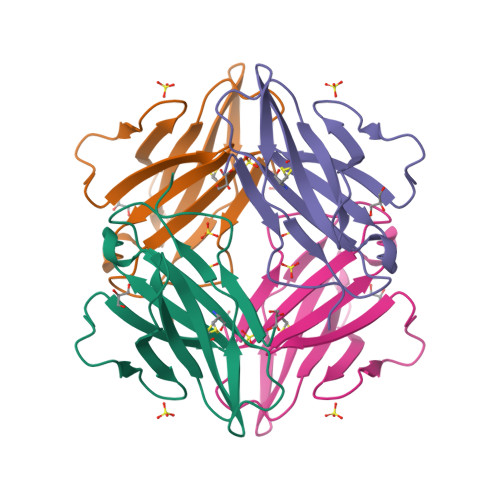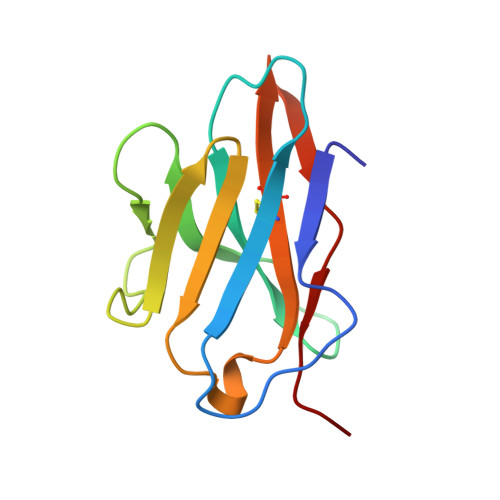Computational design and crystal structure of an enhanced affinity mutant human CD8 alphaalpha coreceptor
Cole, D.K., Rizkallah, P.J., Boulter, J.M., Sami, M., Vuidepot, A.-L., Glick, M., Gao, F., Bell, J.I., Jakobsen, B.K., Gao, G.F.(2007) Proteins 67: 65-74
- PubMed: 17243170
- DOI: https://doi.org/10.1002/prot.21176
- Primary Citation of Related Structures:
2HP4 - PubMed Abstract:
Human CD8 is a T cell coreceptor, which binds to pHLA I and plays a pivotal role in the activation of cytotoxic T lymphocytes. Soluble recombinant CD8 alphaalpha has been shown to antagonize T cell activation, both in vitro and in vivo. However, because of a very low affinity for pHLA I, high concentrations of soluble CD8 alphaalpha are required for efficient inhibition. Based upon our knowledge of the wild-type CD8/pHLA I structure, we have designed and produced a mutated form of soluble CD8 alphaalpha that binds to pHLA I with approximately fourfold higher affinity. We have characterized the binding of the high affinity CD8 mutant using surface plasmon resonance and determined its structure at 2.1 A resolution using X-ray crystallography. The analysis of this structure suggests that the higher affinity is achieved by providing a larger side chain that allows for an optimal contact to be made between the HLA alpha3 loop and the mutated CDR-like loops of CD8.
Organizational Affiliation:
Nuffield Department of Clinical Medicine, John Radcliffe Hospital, Oxford University, Oxford, United Kingdom.



















